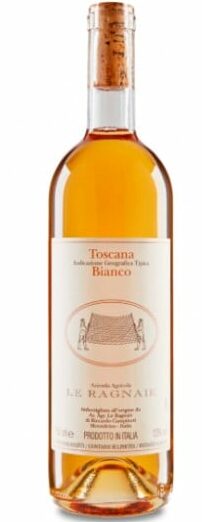Le Ragnaie is known for its elegant, terroir-driven wines that stand out in this Tuscan powerhouse category. The owner and winemaker, Riccardo Campinoti, acquired the property in 2002 and now farms 15.5 ha. Making complex, traditional wines from Sangiovese Grosso, Riccardo’s wines exhibit elegance and finesse by farming some of the highest-altitude vineyards in Montalcino. All four Brunello wines are fermented in concrete without selected yeast followed by a long maceration of up to 90 days and three years in large Slavonian oak botti. All wines are bottled unfiltered and certified organic in the vineyards and cellar.
Le Ragnaie is known for its elegant, terroir-driven wines that stand out in this Tuscan powerhouse category. The owner and winemaker, Riccardo Campinoti, acquired the property in 2002 and now farms 15.5 hectares of some of the highest-altitude vineyards in Montalcino. Le Ragnaie’s wines are made from 100% Sangiovese Grosso and exhibit elegance and finesse. All four Brunello wines are fermented in concrete without selected yeast followed by a long maceration of up to 90 days and three years in large Slavonian oak botti. All wines are bottled unfiltered and certified organic in the vineyards and cellar.
Vineyards
All vineyards are worked following the strict guidelines of organic agriculture. Le Ragnaie uses no chemical fertilizers (only minimal use of Bordeaux mixture and powdered sulfur) and plants cover crops (legumes, clovers, and grasses) in the fall in lieu of fertilizer. This helps regenerate the land after a long summer season and enriches the soil’s organic matter. Additionally, the diversity of plants in the vineyard prevents superficial erosion and enhances water absorption and retention. Plus, it provides an essential habitat for many species of animals and insects. Taken as a whole, this guarantees the formation of an ecosystem full of life, which is essential to the health of the vines.</p>
The Le Ragnaie vineyards are divided into three distinct parcels of land throughout Montalcino, which allows the winery to produce three diverse ‘terroirs’ of Brunello:
- Ragnaie, Vigna del Lago, Vigna Fonte, Vigna Cappuccini, Vigna Vecchia: These vineyards are in the central zone of Montalcino with a southwest exposition and facing the sea. The vines here enjoy the highest elevation of any vineyard in Montalcino, at 530-600 meters above sea level, which allows for the harvest to begin in the second half of October. The vines vary between 5-40 years of age. The vines are surrounded by an oak forest, olive groves, and a small lake: an ideal habitat for animals and insects.
- Petroso: A single hectare, located below the village of Montalcino in one of the oldest winemaking zones in the area. The vineyard is 380 meters above sea level and is surrounded by a forest.
- Castelnuovo dell’Abate: The winery has three parcels of land in the Castelnuovo dell’Abate region of Montalcino, in the southern sector, facing Mount Amiata. This is one of the most prestigious winemaking areas in the “ilcinesi” territory, with many wineries purchasing plots here in recent years as its recognition has grown.
Winemaking
Grapes are harvested by hand, destemmed, and table sorted. The grape musts are placed in cement vats to begin maceration and fermentation. They remain in these vats for 25-40 days. After pressing, they are placed in barrels—both 25hl Slavonian oak and 225-liter Allier oak barrels. The Rosso di Montalcino stays in oak for nine months (a mix of sizes) and the Brunello di Montalcino rests for 36-48 months in 25hl Slavonian oak barrels. Next, the wine is bottled and rests in a temperature and humidity-controlled environment until it is ready for release.















